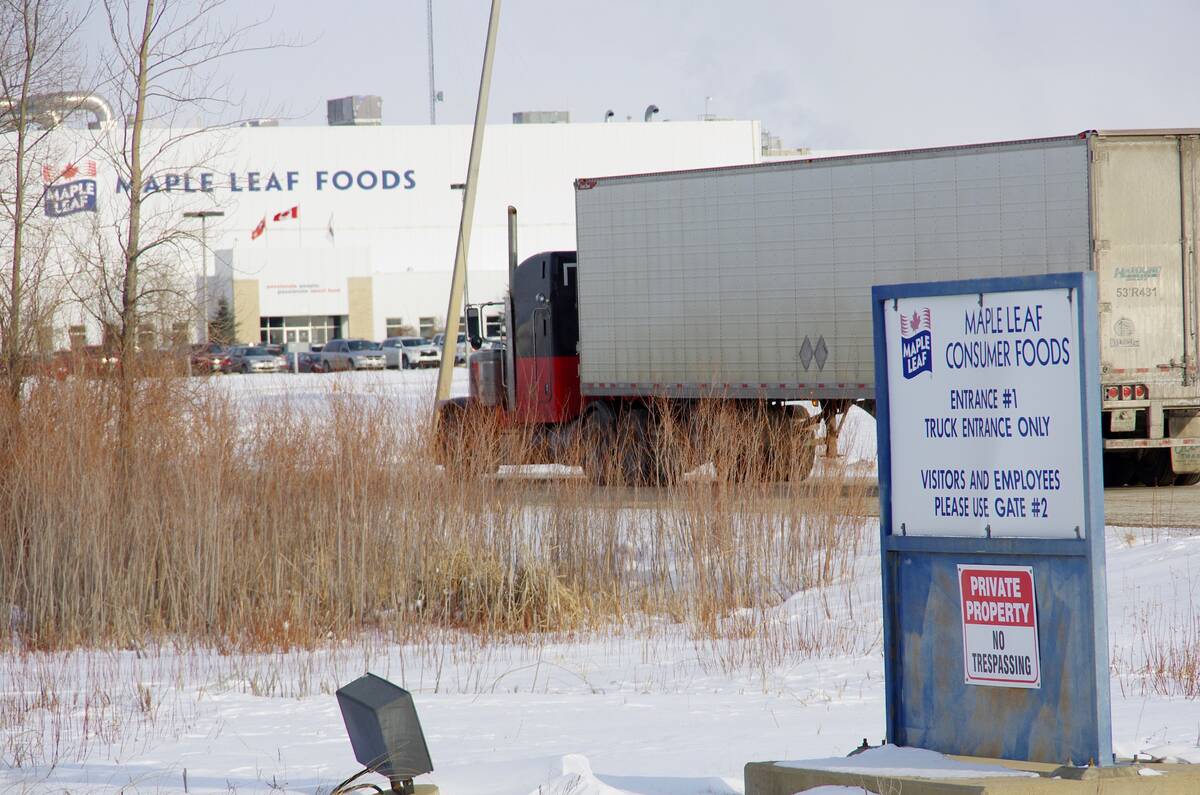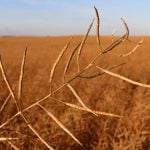BANFF, Alta. — The Canadian water supply contains thousands of impurities.
Some are naturally occurring while others are the result of runoff that carries lubricants, pesticides, antibiotics and industrial chemicals, said scientists attending the recent Alberta Institute of Agrologists water conference at Banff.
The national drinking water guidelines are not met in some parts of Alberta because wells contain elevated levels of sodium sulfate, fluoride, arsenic, manganese and selenium.
“This is nothing to do with contamination. I am talking about Mother Nature,” said Bob Shotyk of the University of Alberta, whose findings are based on rural water well tests released in 1997.
Read Also

Manitoba pork exports gain new market ground
Manitoba’s pork trade pivoted from China over the last five years, while Japan is remains the largest customer and South Korea and Mexico market footholds have grown
Most of Alberta is part of the western sedimentary basin, which was once an inland sea.
“We know there is lots of salty water in this province just because of the geology,” he said.
Trace metals also occur naturally in surface and ground water, but there is concern over a growing list of synthetic contaminants that have no natural source, he said.
Agriculture and municipal runoff affects water quality, but the Alberta oilsands are often targeted as a major polluter.
The Royal Society of Canada reported in 2010 that there was no model that suggested how much water could be withdrawn by oilsands activity or how the project affects ground water.
Shotyk said the environment suffers from the potential effects of nitrous oxide and sulfur dioxide as well as trace metals and acid rain.
The tailings ponds are surrounded by 30 metre high dikes and it is suspected contents are slowly migrating into the surface and ground water.
A major concern is the potential leaching of napthenic acid into the water. It is a primary constituent of bitumen waste water.
The release of polycyclic aromatic compounds is also a problem. These have low water solubility and some have potential genetic or carcinogenic effects. They were linked to scrotal cancer in Victorian era chimney sweeps.
A number of reports have been issued on the oilsands and water quality, and the province has promised a new monitoring environmental monitoring program.
“Commercial development of the oilsands began in 1967. Why has this taken 45 years?” said Shotyk.
Another concern is the changing landscape with mines, deforestation, roads and pipeline rights of way that alter watersheds.
In agricultural areas, contaminants found in drinking water include bacteria, pesticides and pharmaceuticals. They are often below drinking water guidelines, but studies have found some products can cause deformities in some species.
For example, studies of the herbicide atrazine showed that exposure of less than one part per billion caused feminization of male frogs.
About 6,000 kilograms of atrazine were used in Alberta in 2008. It is more commonly found in the American corn belt.
Antimicrobials are also found in surface water, which is a problem because of the concern about antibiotic resistance. Their presence also slows the bacterial decomposition of manure.
Runoff from municipalities contains undesirable products such as pesticides, fecal coliforms and toxins from asphalt.
“Cities are very dirty places,” he said. “The more we put into our water, the more we have to take out before we can drink it.”
The challenge for cities is maintaining clean water with aging infrastructure.
Calgary and Edmonton may double in size within 25 years. Their water treatment is good, but that is not always the case for smaller communities.
Shotyk said more attention should be paid to nature’s ability to clean water as it percolates through soil.
“A farm is a natural water filtration system. Our wetlands, let’s leave them alone. Let’s plant some trees.”
Riparian areas with more trees are needed.
“If you want a better natural water purifier, make sure the water gets into the soil. It will also move nutrients,” said David Chanasyk of the University of Alberta’s renewable resources department.
The province is studying how agriculture affects water quality so it can work with farmers to correct problems and maintain quality guidelines.
Livestock manure is considered to be the main degrader of water quality along with pesticide runoff, especially in summer, said Andrea Kalischuk of Alberta Agriculture.
Water quality has remained generally unchanged during the last decade. As agriculture intensity increases, water quality generally decreases. However, measurements exceed the guidelines for phosphorus residues more than 40 percent of the time even when farming intensity is minimal.
The greatest risk came from manure spreading. The province’s Agriculture Operations Practices Act regulates its application, but most is spread on a small land base because it is too expensive to haul further.
The law is based on how much nitrogen the soil can safely accept. The province conducted a study 10 years ago to consider shifting to a phosphorous standard but did not move on it.
“It recognized at that time we are not ready to move forward on phosphorous limits until we understand the solutions,” Kalischuk said.















